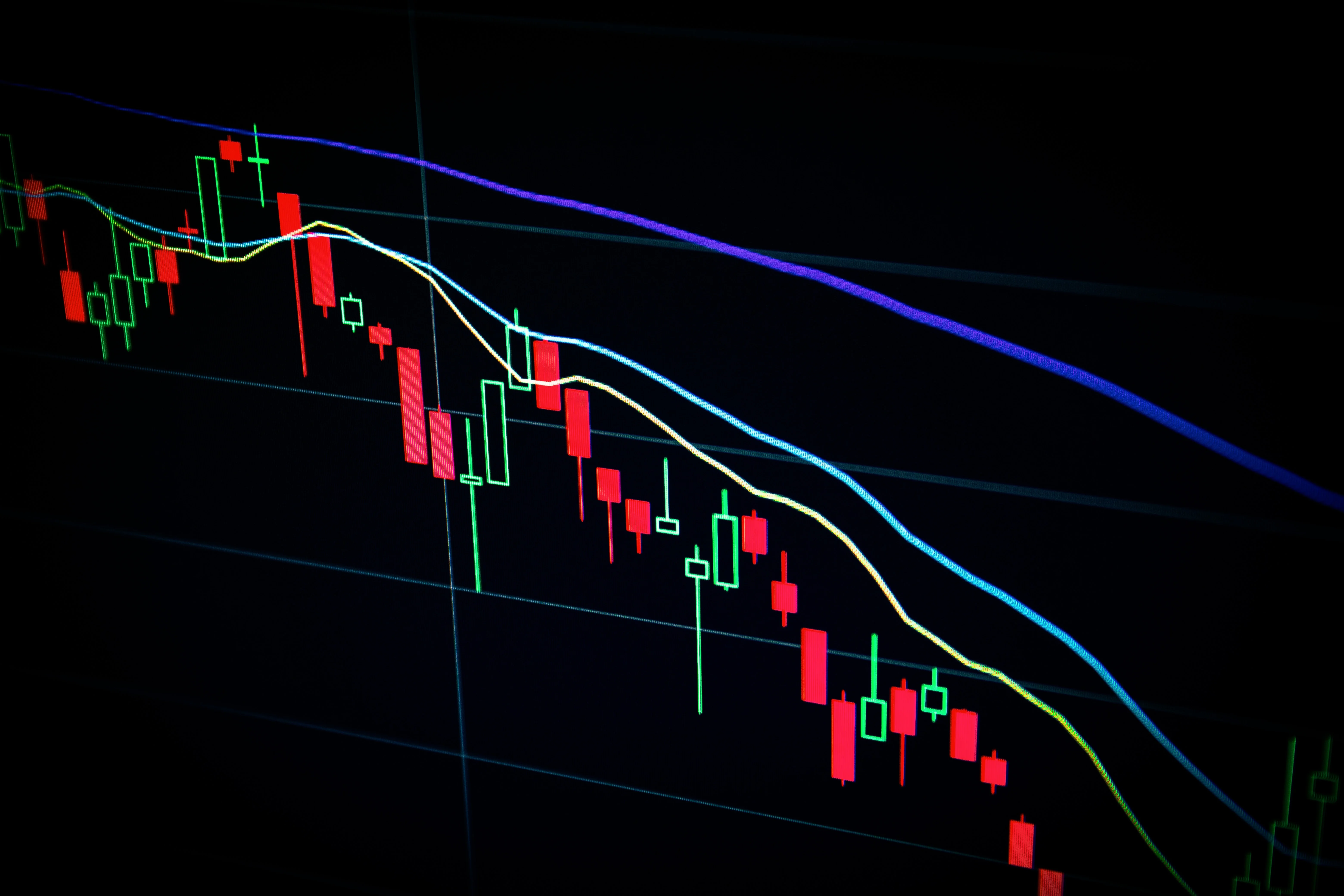Introduction
Automated Market Makers (AMMs) have undeniably changed the landscape of cryptocurrency trading, introducing a new paradigm that goes beyond traditional order books to determine token prices. Today, AMMs offer an innovative and transformative method that not only facilitates trading but also opens doors to various opportunities for generating passive income. However, it's important to note that the following discussion is for informational purposes only and should not be considered as investment advice. Always do your own research to make informed decisions regarding passive income and cryptocurrency investments. In this article, we dive deep into understanding how AMMs have influenced token pricing and explore the potential opportunities they present for crypto enthusiasts to earn passive income in the ever-evolving DeFi landscape.
What are AMMs?
At their core, AMMs are decentralized exchange protocols that establish and adjust token prices automatically. Instead of relying on conventional order books, which match buyers and sellers, they utilize mathematical formulas and liquidity pools. These algorithms ensure there's always a buyer and seller, making trading seamless and eliminating the need for intermediaries.
Why AMMs matter in today's crypto landscape
AMMs hold a pivotal role in the modern crypto landscape, fundamentally altering the way trading and investment strategies are approached. They have democratized the financial markets by offering unprecedented access to market making strategies, enabling liquidity providers to potentially earn passive income.
Their fully automated processes stand in contrast to traditional order book systems, which rely on market makers to manage liquidity actively. Furthermore, AMMs facilitate 24/7 trading without the need for intermediaries, fostering a more open and accessible financial ecosystem. These features underscore the significance of AMMs in today’s rapidly evolving decentralized finance sector, catering especially to individuals who seek passive income avenues and uninterrupted trading possibilities.
Understanding Token Pricing in AMMs
The burgeoning interest in passive income has many crypto enthusiasts keen on understanding the intricacies of AMMs. So, how does token pricing work within this system? Let's unravel the mystery.
The mechanism of price determination
Absolutely. Here is your revised paragraph:
"The Mechanism of Price Determination Foundational AMMs operate on a principle where the asset prices are intrinsically linked to the quantity of each asset available in the liquidity pool. This is orchestrated through mathematical algorithms like the Constant Product Market Maker (CPMM) model, a prevalent formula utilized by platforms such as Uniswap. As an asset price rises in exchanges, there is an arbitrage opportunity: traders buy the asset on the pool, causing its quantity to decrease relative to other assets in the pool. As a consequence, the price of the asset in the pool increases.
The CPMM is pivotal in guiding the automatic price adjustments in response to changes in the asset ratios within the pool, establishing a direct correlation between asset availability and price determination, thereby fostering an environment for 24/7 trading."
The role of liquidity in price stability
Liquidity is, without a doubt, the backbone of AMMs. The more liquidity a pool has, the more stable its prices tend to be. This stability ensures traders always have the opportunity to buy or sell tokens, which in turn creates another avenue for passive income for liquidity providers. When liquidity is high, the effect of large trades on token prices is minimized, offering a more predictable and secure trading environment.
How traders benefit from AMM pricing
The main benefit is the reduction of trading costs, which should be a consequence of the absence of intermediaries in the AMM structure. This streamlined model not only fosters affordability but also ensures round-the-clock trading availability, adapting to the dynamic lifestyles of modern traders.
Moreover, AMMs open doors to early trading opportunities for low market cap assets, as they allow for the straightforward creation of pools, granting traders the chance to engage with emerging assets at an initial stage. In exchanges, the process is longer as each new asset listed must go through an approval process which usually requires a certain level of liquidity.
The Rise of Passive Income Through AMMs
The world of crypto is ever-evolving, and one of the most prominent shifts has been the emphasis on generating passive income. AMMs have emerged as the torchbearers in this context.
AMMs as a passive income source
For enthusiasts keen on generating passive income, AMMs unfurl a banquet of opportunities that cater to different risk appetites and strategies. On one hand, providing liquidity involves depositing assets into a liquidity pool, a foundational component of AMMs, to facilitate trading and earn fees in return. This strategy is largely passive and aims to accrue income through transaction fees generated from the trading activities within the pool.
On the other hand, yield farming takes a more active approach, where participants seek to maximize their returns by constantly navigating between different pools and protocols to leverage the highest yield opportunities. This might involve staking liquidity provider tokens to earn additional rewards, sometimes in the form of governance tokens or other incentives that are structured to enhance participation in a particular protocol.
Moreover, users can simply engage in holding and trading tokens within these platforms, capitalizing on the AMM's inherent features of seamless 24/7 trading and easy access to a wide range of assets, including those with lower market caps.
Benefits of passive income with AMMs
Stepping into the world of AMMs is like embarking on a treasure hunt. The prospect of earning passive income is both thrilling and rewarding. Besides the monetary benefits, passive income sources in AMMs offer a sense of financial security and independence, making it a worthwhile venture for many.
Potential risks and considerations
Yet, like every treasure hunt, there are challenges and potential pitfalls. The pursuit of passive income, while enticing, is not devoid of risks. Impermanent loss, market volatility, and smart contract vulnerabilities are among the challenges investors should be aware of.
Comparative Analysis with Traditional Exchange Models
The crypto trading world is vast, with AMMs and traditional exchanges being two dominant players. Let's delve into how they compare.
Traditional exchanges vs. AMMs
While traditional exchanges utilize order books to match buyers and sellers, AMMs offer a more streamlined approach. Their promise of passive income, combined with decentralization, makes them a formidable force. Yet, traditional exchanges have their merits, including more established track records and often more advanced trading tools.
Why some traders are switching to AMMs
This can be attributed to a burgeoning interest in and support for the decentralized finance (DeFi) ecosystem, which resonates profoundly with the philosophy of autonomy and democratization of financial opportunities. A significant allure lies in the potent profit opportunities presented through arbitrage strategies. Traders find the AMM platforms fertile ground for capitalizing on price discrepancies between different markets, leveraging these to secure substantial profits.
This financial landscape, empowered by AMMs, paves the way for a new wave of traders who are not only profit-driven but also aligned with the ethos of decentralization and innovation that underpins the DeFi ecosystem."
Future Outlook for AMMs and Token Pricing
The crypto landscape is ever-changing, and with innovations like yield index products on the horizon, the future looks promising for AMMs.
Evolving AMM models
As the crypto world evolves, so do AMMs, adapting and integrating innovations to stay at the forefront of the financial revolution. Newer, more sophisticated models are continually being developed, catering to a wider and more discerning audience. These models promise an expansion of passive income opportunities, further solidifying AMMs' position in the market. Notably, some of these avant-garde models have incorporated features such as the use of oracles and dynamic pricing mechanisms, borrowed from the efficiencies found in order book exchanges. The integration of oracles ensures that the AMM pools can access reliable and real-time market data, thus facilitating more accurate price determinations. Concurrently, dynamic pricing strategies work to minimize slippage and offer improved liquidity management, drawing a line of symmetry between the automated ease of AMMs and the nuanced efficiencies of order book exchanges. By harmonizing the best of both worlds, these evolutionary steps in AMM design are setting a trajectory towards a more inclusive, lucrative, and robust decentralized financial ecosystem.
Conclusion
The rise and prominence of AMMs, with their distinctive token pricing mechanisms, signify a new era in crypto trading. As more individuals recognize the potential for passive income and the benefits AMMs bring, their influence is set to grow exponentially.
Frequently Asked Questions (FAQs)
- What are the primary benefits of AMMs over traditional exchanges? AMMs offer enhanced passive income opportunities, decentralized operations, and innovative pricing mechanisms.
- How does liquidity impact token pricing in AMMs? Higher liquidity generally ensures more stable prices and consistent trading opportunities.
- Are AMMs risk-free? No investment is risk-free. While AMMs offer several benefits, they come with potential risks like impermanent loss.
- How often should I review my investments in AMMs? Regular review is essential, considering market dynamics and the quest for maximizing passive income.


